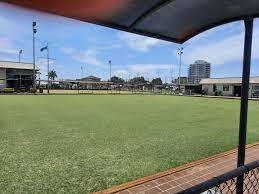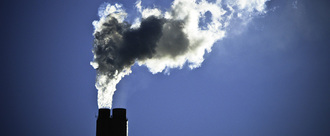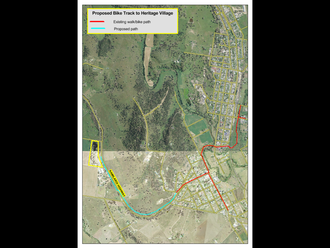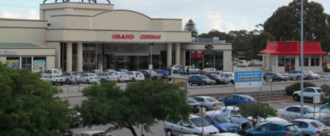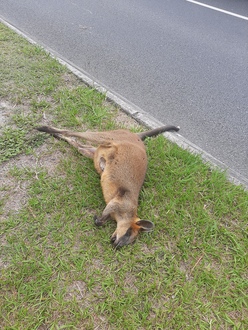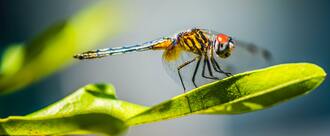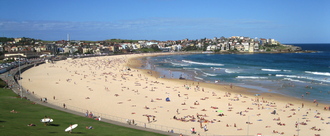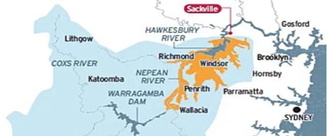-
Keep The Greens Bowling Club, The Entrance, on Community land.Community land and recreational space are important to the health and well being of The Entrance community. The land forms part of the green space so valued by The Entrance community. The Greens Bowling Club has been used by members for decades. The land upon which it sits is a community asset. It should not become an asset of a corporation. The land must continue to be used for recreation. Bowling on an outdoor green has been part of Australian culture for decades,and should be kept for future generations.76 of 100 SignaturesCreated by Jacqueline Austin
-
We Support the Switch to Renewables!Gas is bad for our planet - it’s a dirty and dangerous fossil fuel that fossil fuel corporations need to stop burning as soon as possible to give us any chance of avoiding a catastrophic climate future. The past two years have shown us that we are already living with the dangerous effects of a heating planet - with bushfires and floods raging across the country. Not only that, gas is bad for our health. As a retired GP I saw firsthand how many of my patients suffered from asthma. And according to the Asthma Council, burning gas inside produces nitrogen dioxide, which can exacerbate asthma and other respiratory illnesses. Why wouldn’t we clean up our homes with clean electricity instead? Canterbury-Bankstown Council have developed a country-leading plan to ban new gas connections and cut emissions. As many of us as possible need to get behind it! Sign my petition today.418 of 500 SignaturesCreated by Rod Anderson

-
Stop the salmon catastropheTassal salmon is responsible for a growing number of environmental catastrophes in Tasmanian waterways from to the Derwent estuary to Huin river and with their planned expansion in Storm bay, Bruny Island and several undisclosed sites around the Tasmanian coast. The cost to the environment and the local communities is seen through the impacts to clean drinking water, algae blooms, continuous industrial activity 24/7 and annihilation of marine life and entire marine ecosystems under and surrounding the salmon farms. Rather than managing Hobart’s drinking water for public risk, the Environment Protection Authority (EPA) – Tasmania’s environmental regulator – gives the appearance of existing only to enable the expansion of the salmon industry. Rather than improving hatchery standards to an acceptable level, it sanctions more and larger hatcheries on Hobart’s water catchment. Basic measures such as drum filters do not address the vast amount of dissolved nutrients – ammonia, nitrate, phosphorus – which hatchery fish release through their gills, along with decayed faeces and food, into the source of drinking water for half Tasmania’s population.18 of 100 SignaturesCreated by Pascal Bosshard
-
Extend Quirindi’s walking/cycling paths to the Heritage VillageThe Village is the town’s premier attraction but currently locals can only get their by driving; extending the walking/cycling track to the village would not cost much but would greatly improve the exercise options of local residents.8 of 100 SignaturesCreated by Lyle Passfield
-
Real High Speed Rail Geelong-MelbourneThe $4b project is projected to cut the time for a Geelong - Melbourne trip to 50 minutes. This is 5 minutes longer than the 2006 Regional Fast Rail express train trip of 45 minutes. For this sort of money we should be embarking on true High Speed Rail with an estimated Geelong - Melbourne trip of 17 minutes ( http://www.megarail.com.au/ ) The MegaRail proposal with stations at Avalon Airport and Werribee will greatly enhance the livability and and economic strength of Melbourne's west as well as Geelong and could be built with the $4b currently available as a privately co-funded Build-Own-Operate-Transfer (BOOT) project. The State Government $50m Geelong Fast Rail Study announced in March 2018 promised train speeds of between 250kph and 300kph. This proposal using conventional V/Line Trains and a third track between Werribee and Laverton is a total cop-out and if Geelong lets it happen we will never get a decent High-Speed train service.10 of 100 SignaturesCreated by Jeff Moran
-
Warwick's WalkabilityTo get to the shops from the cinema and vis versa you have to cross multiple roads. the paths are uneven and unsuitable for scooters, wheelchairs, bikes or hoverboards. My dad is in a wheelchair and has to travel on road and through the busy carpark to get from the cinema to the shops.325 of 400 SignaturesCreated by Sophie Bell
-
Keep NW Tasmania Fish Farm FreeIf fish farms are established in NW Tasmania's pristine waters then there will be a massive negative impact on our environment, economy and society. Wynyard, Burnie, Sisters Beach, Table Cape to Stanley's economies are based on a clean, green and unspoiled image. If the NW Brand is tainted by its association with industrial fish farming, and the rapidly accelerating negative press and opposition it is generating, then our economy will be severely impacted. The very reasons that attract visitors and residents to NW Tasmania are diametrically opposed to the industrialisation of our pristine marine environment. Our way of life and quality of life are under threat just so companies and shareholders can make even more money. We reject private corporations & the government making profits off the backs of pristine waters & residents1,463 of 2,000 SignaturesCreated by Kate Day
-
Kangaroo Road Kills on Bribie IslandBribie Island is a flora and fauna sanctuary. Over one third of the island is National Park. Development has accelerated with little planning to cater for this unique Island and its natural flora and fauna. The local Council, Moreton Bay Regional Council does not have a plan specifically for the management of this unique and beautiful, but fragile Island. Kangaroos, Wallabies, snakes, birds and lizards are killed on the roads almost daily. The emus are now extinct on the island as a result of human impact. People move to Bribie Island for its "Liveability" The flora and fauna are part of that. People don't want to see dead kangaroos on the footpath outside the school or the Police euthanasing (shooting) a badly injured kangaroo in their front yard. This already happens too often. Development of the island must proceed with the fragile nature of the flora and fauna in mind: not at its expense. It will only get worse if nothing is done.669 of 800 SignaturesCreated by Ken Salisbury
-
Are you fogging kidding me? Let’s create a cleaner, chemically free Exmouth together.There are a number of reasons why we should ban fogging in Exmouth, Western Australia: 1. Fogging is ineffective - Fogging is only moderately effective in the control of the mosquito population. For each adult mosquito killed, many more larvae in the water remain unaffected. Fogging kills the adults and that gives temporary relief for the day. But the breeding source nearby is not affected, and the next day there will be more adults that can continue to breed and infect us. Reducing the number of larvae is a more effective measure, which means that oiling achieves better results than fogging. 0.1% of sprayed pesticides actually hit the target pest - 99.9 % go off into the environment (Pimentel, D. PhD., BioScience) The pesticides are actually negatively affecting our bird, bee (including native bee), and dragonfly population more than the mosquito population. The risks on our oceanic ecosystem and marine life is also largely unknown. 2. Fogging is toxic to our health - the pesticides used in vector control are neurotoxins and have been linked to adverse effects in humans. Ingredients used in mosquito fogging - malathion mixed with diesel - are powerful neurotoxins, carcinogenic and endocrine disruptors. Exposure to neurotoxins, even in low quantities, is also associated with numbness of the lips and tongue, nausea, headaches and respiratory problems. For these reasons, many countries have banned open-air fogging completely. Pregnant women, fetuses, infants, and children have a greater risk of getting sick from pesticides. Our children and grandchildren are exposed to these pesticides just by playing on our lawns once the fogging is complete. Airborne pesticides are particularly harmful as they may be easily ingested by humans and wildlife. Pesticide residue can also be left behind on items kept outdoors, such as children’s toys and outdoor furniture, or tracked inside on shoes. Children, the elderly, and the chronically ill are at greatest risk from chemically induced immune suppression. (World Resources Institute) Children have a greater risk of developing asthma by age five after pesticide exposure within the first year of life. 3. Fogging is also toxic to other insects and animals, such as butterflies, dragonflies and bees - these beautiful insects are particularly sensitive to pesticides. Malathion is highly toxic to bees and other beneficial insects, some fish, and other aquatic life. When bee populations are greatly affected by pesticides, food production in the area could be affected because of the lack of pollination. Pesticides are also harmful to many other animals, including those that are natural predators of mosquitoes. Most pesticides used in fogging are toxic to fish, which are very important for the eradication of mosquito larvae. Frogs, geckos and birds, which also eat mosquitoes, could also be affected by pesticides. We would like to suggest the following alternatives to fogging: 1. Responsible housekeeping and maintenance -Remove all sources of stagnant or standing water if possible. The eradication of breeding grounds in personal and commercial spaces are much more effective tools in the fight against Ross River virus and Barman Forest virus than widespread fogging is. 2. Relocating the budget to spending the money to destroy and control breeding zones, rather than on fogging. Safe alternatives exist such as garlic and cedar sprays which can last for a month. This should also decrease the current expense that the Health Department currently accrue. 3. Replacing pesticides with natural mosquito repellents such as garlic, peppermint or lemon oils or citrus-based sprays. Turpentine and eucalyptus oils, garlic extracts, surface oils, extracts of orange and lemon peel will all control mosquito larvae. Cinnamon Oil is better for repelling mosquitoes than what is being used. 4. Increasing community effort - The responsibility for eliminating breeding grounds in one’s own home and garden, while reporting possible breeding sites in public spaces to the relevant authorities, lies with everybody. We all need to play our part to keep the mosquito breeding grounds at bay. 5. Increasing and protecting the number of mosquito predators, such as dragonflies and bats, which are both highly effective ways of controlling mosquitoes naturally. The spraying of pesticides kills those natural predators as well as mosquitoes, and because mosquitoes have a shorter reproductive cycle than their predators, following every spraying there are more mosquitoes than there were before, as a number of studies have shown. If you need to control mosquitoes, do not spray; instead, remove standing water (in which mosquitoes breed) and consider introducing dragonflies to the area. Did you know: o A single bat can eat between 6000 to 8000 insects each night. o A single frog can eat over 100 insects in one night. o Dragonflies can eat 30 to 100s mosquitoes per day. The Exmouth Community are strongly advocating for the use of an effective and non-toxic method for reducing the risk of mosquito borne illnesses in Exmouth. Until a safer solution is researched and implemented, we are requesting that further fogging be put on hold.36 of 100 SignaturesCreated by Madeleine Doherty
-
Save Great Keppel IslandIn the last two election campaigns by our local MP Brittany Lauga, she has promised $25 million towards improvements to public amenities on GKI. These included a cyclone rate jetty, improvements to walking tracks and amenities for the public. To date non of these promises have be fulfilled. Instead, money has been used for useless studies such as "Decarbonising GKI" and $millions on a study to bring water and power to to GKI from the mainland. Where is the jetty and other promises? In the meantime Altum want the money ($30 Million) to build a marina on the most shallow beach on GKI. If they need $30 million to start construction it would be obvious to anyone but the State Government they can't pass due diligence for their Financial Capability to deliver anything on the GKI. Currently the "Woppaburra Land Trust" have a claim of Native Title over a significant part of the development proposal.39 of 100 SignaturesCreated by Tom Sjolund
-
No Beach Club on Bondi BeachThe proposed Amalfi Beach Club would privatise part of Bondi Beach and significantly damage the character of the beach. Bondi Beach is loved by locals and visitors to the area. We can't allow the construction of a private club on this most cherished public land.145 of 200 SignaturesCreated by Keri Spooner
-
Flood Prevention in the ValleyA lot of energy has already been put into raising the height of the wall to “save the people” against "selfish" conservationists who want to save green space and indigenous heritage. The opposite seems closer to the truth with more development of lifeless hotboxes. The NSW Government will get more for their investment by financially supporting councils throughout the catchment to contain all runoff into wetlands, parks and ponds. This offers cooling amenity throughout western Sydney. Better for liveability for people, supposedly politician’s primary concern. Penrith should never be the hottest place on earth (https://www.sbs.com.au/news/sydney-s-penrith-the-hottest-place-on-earth-amid-devastating-bushfires). Keeping water in bodies of water like creek-lines, wetlands and ponds prevents bush fires by keeping the land cool, hydrated and ready to receive rain which it can hold rather than release into flood. Flood and drought are two sides of same operation. Hold onto rainwater (stops flood) and drought is prevented equally.10 of 100 SignaturesCreated by Sarah McLoughlin

